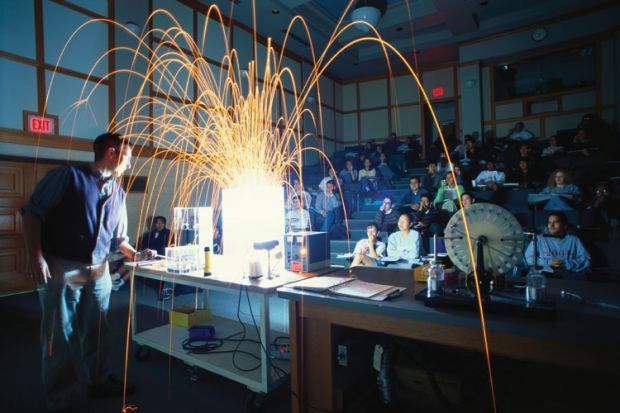Policy makers regularly talk about the need to encourage more undergraduates to pursue science and technology fields. New data suggest that undergraduates at four-year institutions in the US have become much more likely to study those fields, especially engineering and biology.
And while much of the public discussion of STEM enrolments has suggested a STEM vs. liberal arts dichotomy (even though some STEM fields are in fact liberal arts disciplines), the new study suggests that this is not the dynamic truly at play. Rather, STEM enrolments are growing while professional field enrolments (especially business and education) are shrinking.
The research, presented at the annual meeting of the American Educational Research Association, is by Jerry A. Jacobs, professor of sociology at the University of Pennsylvania, and Linda Sax, professor of education at the University of California at Los Angeles.
Much of the data typically discussed on student enrolment patterns come from the National Center for Education Statistics. But the new study is based in large part on the “freshman survey” conducted annually by UCLA on a national pool of new undergraduates at four-year institutions. In their paper, Professors Jacobs and Sax write that this data set enables them to spot trends much earlier than is possible with the federal database, since that information is based on graduation (which comes much later than enrolment) and because government cuts have led to delays in federal data.
Using data collected by UCLA, the professors write that from 1997 to 2005, the proportion of first years planning to enrol in STEM fields declined, hitting a low in 2005 of 20.7 per cent. After modest gains in 2006 and 2007, real increases started to show up in 2008. The percentage of first years planning to major in STEM increased from 21.1 per cent in 2007 to 28.2 per cent in 2011, just as the recession was prompting many students and families to focus on the job potential of various fields of study. That represents a 48 per cent increase in just a few years.
The growth was not consistent across STEM fields. Engineering saw a 57.1 per cent increase (consistent with findings from the American Society for Engineering Education) and biology saw gains of 28.2 per cent. But the physical sciences saw gains of 11.1 per cent, and mathematics was up by 12.6 per cent.
Generally, the STEM gains were seen for both male and female students, so gender gaps that remain in some STEM fields weren’t significantly changed.
The paper notes that disciplines such as biology and mathematics, while STEM fields, are located in arts and sciences at many institutions, so that a “STEM vs. liberal arts” comparison doesn’t make sense.
But the fields showing declines during this period were not traditional liberal arts fields, but applied fields. The paper notes that business and education saw declines of 5.9 per cent, suggesting that they – more than the liberal arts - are losing new undergraduates.
Professor Jacobs said in an interview that those concerned about STEM education shouldn’t pursue that goal at the expense of the humanities. He said that the critical thinking skills associated with the humanities are needed by all kinds of students. Those who want more STEM students should focus on attracting more female students, some of whom may not feel encouraged in the area, rather than offering “criticism of the humanities”, as a number of politicians have done lately.
He said he was pleased to find that the increase in STEM enrolments was coming from professional programmes, rather than liberal arts programs.




